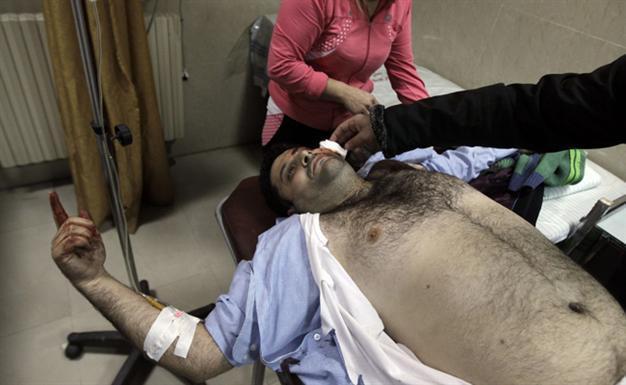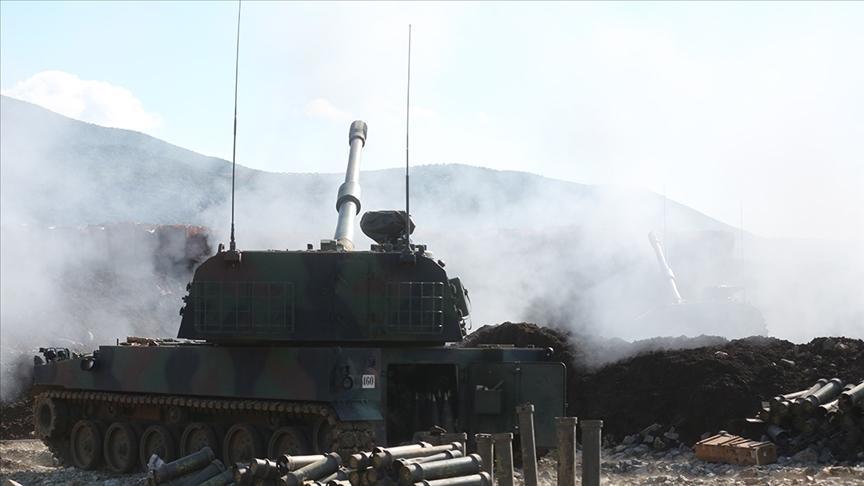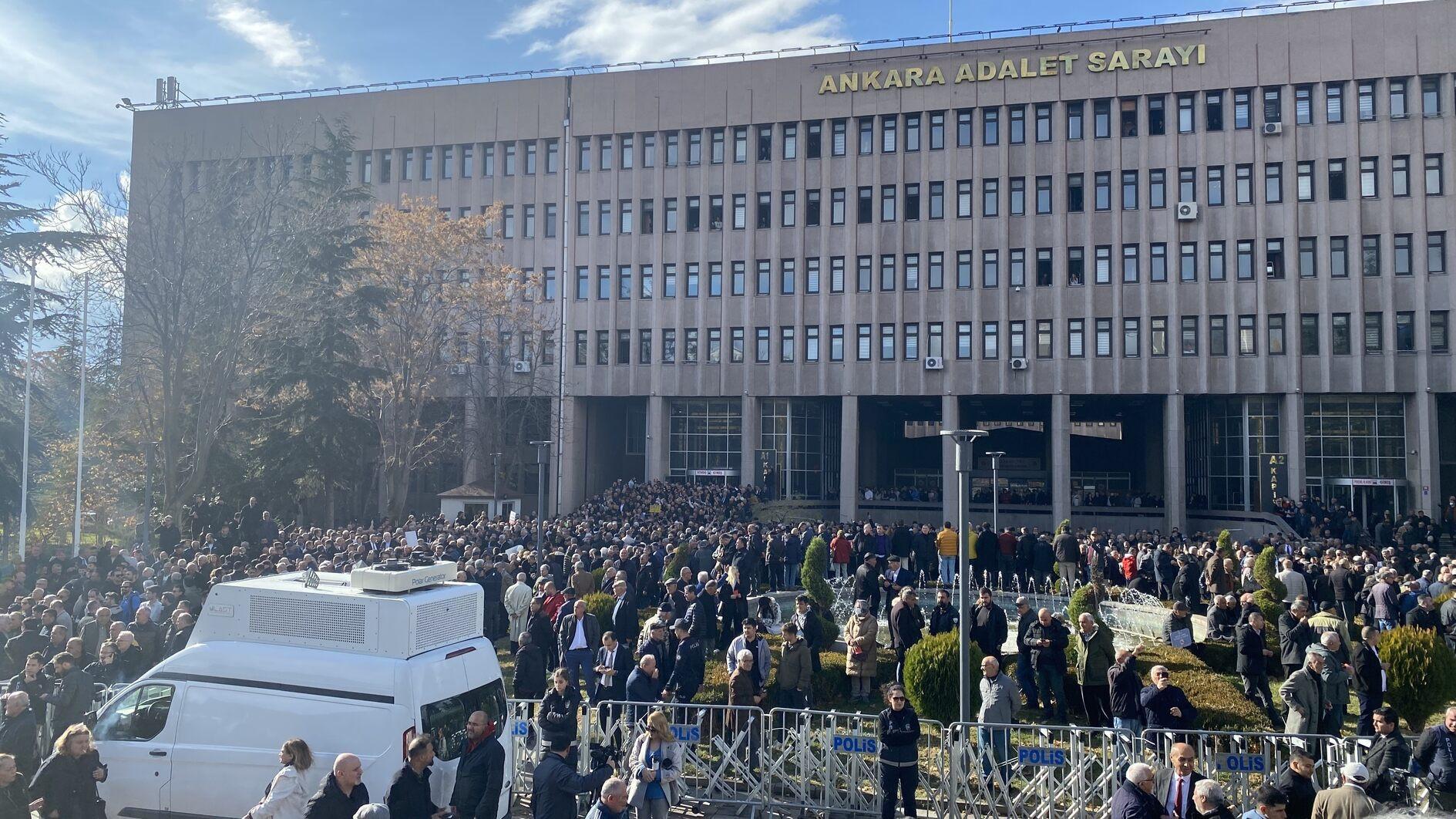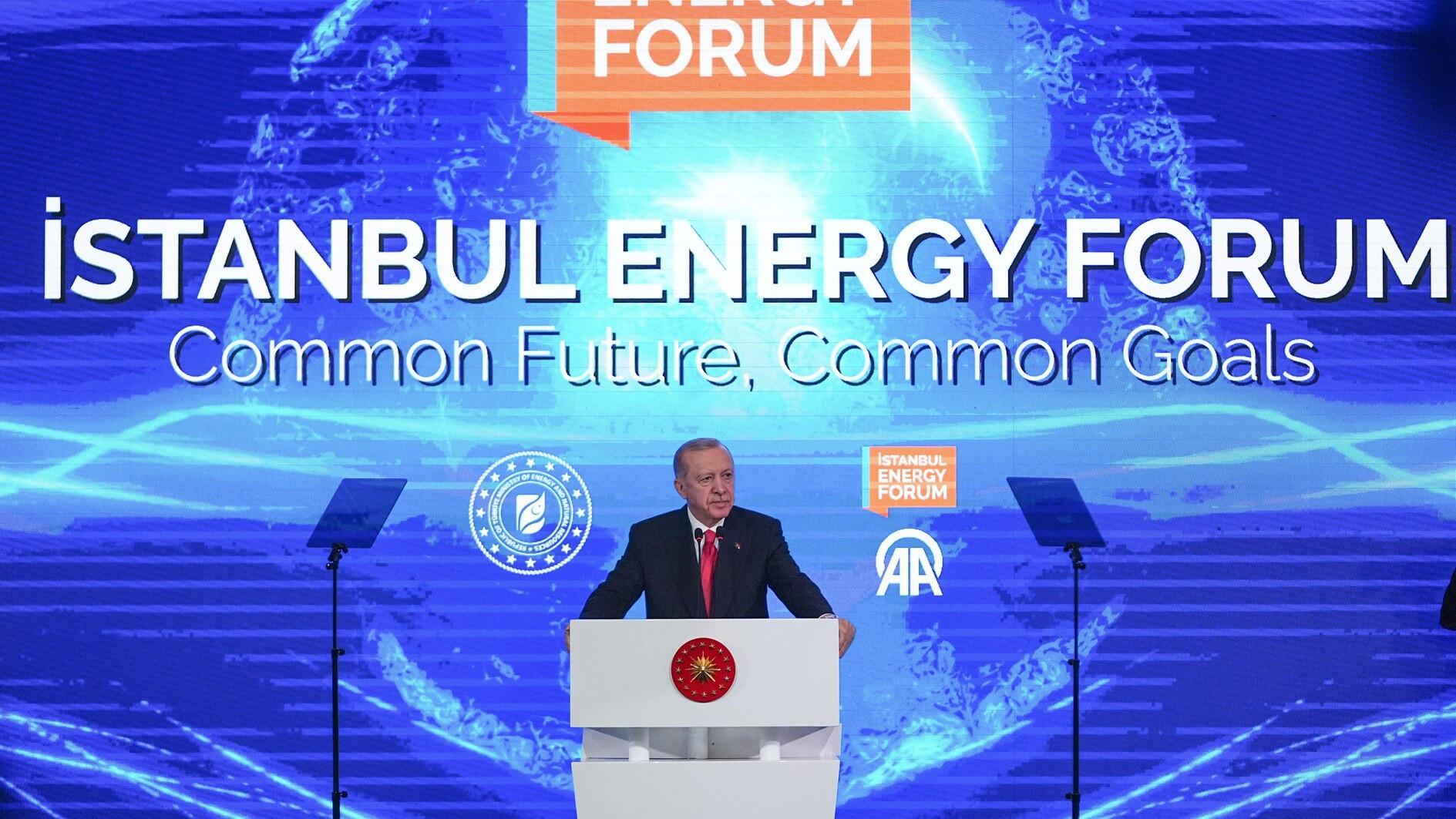UN says has similar video of Syrian hospital torture
GENEVA - Reuters

A wounded Syrian man receives medical treatment at a hospital after he was wounded following an artillery shelling in Akrama neighbourhood on Jan 11. AFP photo
The United Nations has footage similar to a video aired by Britain's Channel 4 television station purporting to show Syrian patients being tortured in hospital, U.N. human rights spokesman Rupert Colville said today."The High Commissioner was sent this footage by Channel 4 yesterday. In fact we have some similar footage," Colville, spokesman for U.N. High Commissioner for Human Rights Navi Pillay, said.
"It may even be the same footage which was sent to the commission of inquiry on Syria," Colville told a news briefing. "The pictures are truly shocking."
The secretly shot video, which Channel 4 aired on Monday, showed what it said were Syrian patients being tortured by medical staff at a state-run hospital in Homs.
Wounded, blindfolded men were chained to beds. A rubber whip and electrical cable lay on a table in one of the wards. Some patients showed signs of having been severely beaten.
Channel 4 said it could not independently verify the video, but Colville said independent investigators reporting to the U.N. Human Rights Council had received similar images and testimony.
This had been used in their Feb. 23 report that accused Syrian forces of committing crimes against humanity, including torture.
The first report by the U.N. commission of inquiry last November documented cases of injured people taken to military hospitals where they were beaten and tortured during interrogation.
"Torture and killings reportedly took place in the Homs military hospital -- which is the one shown in the Channel 4 footage -- by security forces dressed as doctors and allegedly acting with the complicity of medical personnel," Colville said.
"In other words, what the commission of inquiry reported back in November is pretty much what you see both visually and in the witness account in the Channel 4 footage," he said.
The U.N. inquiry documented evidence that sections of Homs military hospital and Latakia state hospital were "transformed into torture centres actually within the hospitals", he said.
"Security agents, in some cases joined by medical staff, chained seriously injured patients to their beds, electrocuted them, beat wounded parts of their body or denied medical attention and water. Medical personnel who did not collaborate faced reprisals," Colville said.
Brutality 'notorious'
Torture has been documented in Syria for 40 years, "usually carried out under the cloak of permanent security legislation", Colville said, adding: "The brutality of the country's security forces is notorious."
"Methods of torture, most of which are known to have been used in Syria over many years, not just in the past year, include severe beatings, electric shocks, suspension for long periods by the limbs, psychological torture and routine humiliation," he added.
The World Health Organisation (WHO) voiced outrage over the Channel 4 video, although spokeswoman Fadela Chaib said the U.N. agency could not authenticate the images and deployed no staff in Syria.
"Whatever the truth is about possible acts of this kind, they are totally unacceptable for WHO.
Hospitals must remain neutral places where people must have security when they seek care. Doctors who work there must be able to work in an environment of security and neutrality," Chaib said.
As Syrians became afraid of public hospitals, makeshift clinics were set up in mosques and homes, also becoming targets, Colville said.
"Numerous testimonies have been received regarding the obstruction and denial of medical assistance to the injured and the sick. Many of the injured have been prevented from receiving treatment in public hospitals in several locations, including Latakia, Baniyas, Homs, and Idlib," he said.
Consistent testimony described how security forces "tracked down wounded protesters at both private and public hospitals".
Security forces were said to have raided hospitals in Hama in June and July, he said. "Injured demonstrators were reported to have been arrested and taken to military hospitals where they were allegedly interrogated and tortured, again very similar to what you see in the Channel 4 video."
People suspected of helping set up secret clinics have been arrested and tortured by security forces, investigators found.
"They received various testimonies to the effect that security forces warned the staff of private hospitals and ambulance drivers not to treat or provide assistance to injured protesters but to transfer them to public or military hospitals," Colville said.
















